-
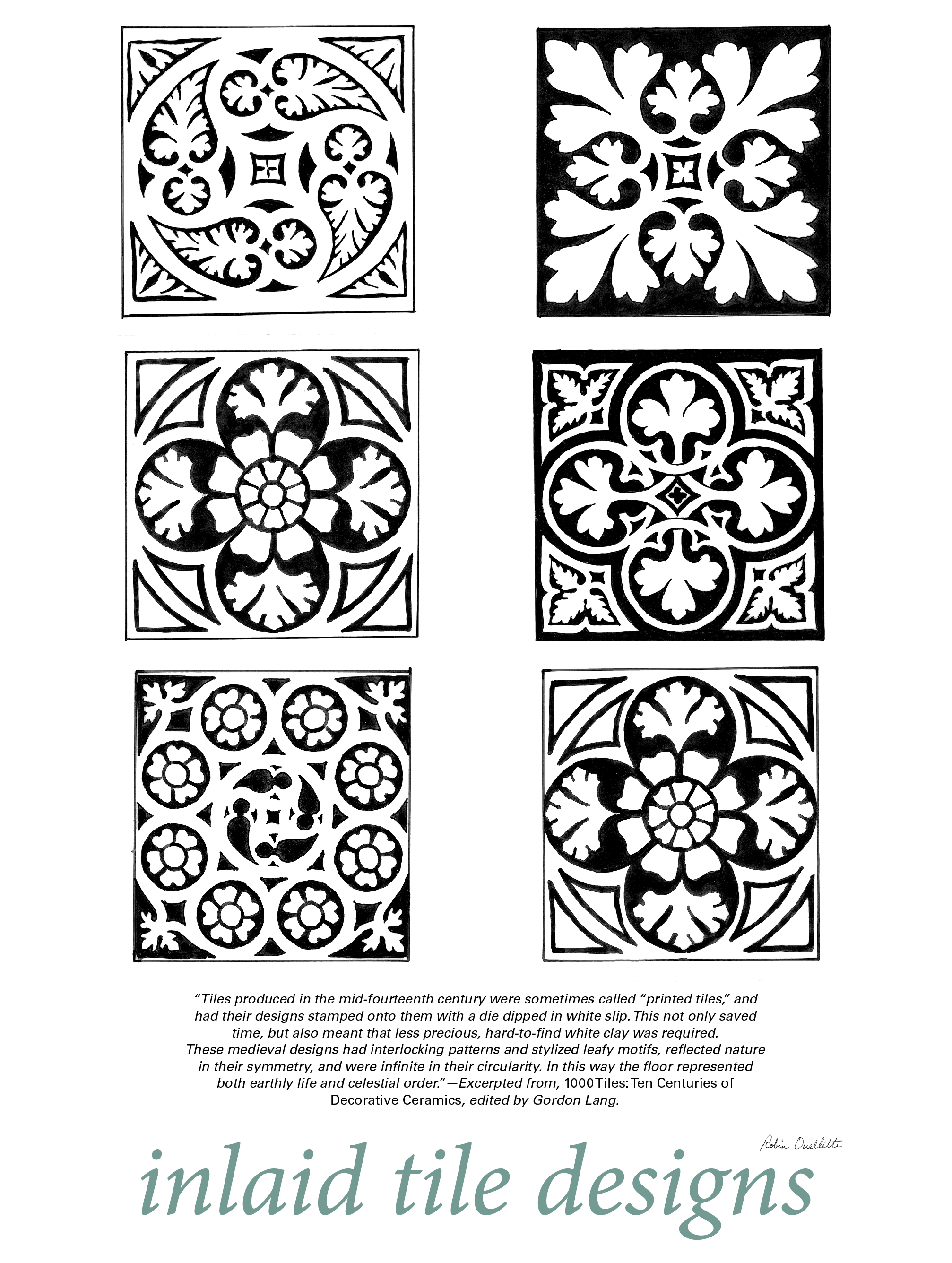 Pottery Illustrated: Inlaid Tile DesignsInlaid tile design illustrations
Pottery Illustrated: Inlaid Tile DesignsInlaid tile design illustrations -
 In the Potter's Kitchen: Combining Clay and CuisineI love to combine handbuilding and slip casting because the finished work is often much lighter in weight and easier to replicate, yet retains the touched pinchy appearance of being entirely handbuilt
In the Potter's Kitchen: Combining Clay and CuisineI love to combine handbuilding and slip casting because the finished work is often much lighter in weight and easier to replicate, yet retains the touched pinchy appearance of being entirely handbuilt -
 8 Ways to Apply GlazeNo matter how eager you might be to begin splashing on your newly concocted glazes, there are a few details that must be put in order first. The surface of the clay form must be cleaned of any dust or
8 Ways to Apply GlazeNo matter how eager you might be to begin splashing on your newly concocted glazes, there are a few details that must be put in order first. The surface of the clay form must be cleaned of any dust or -
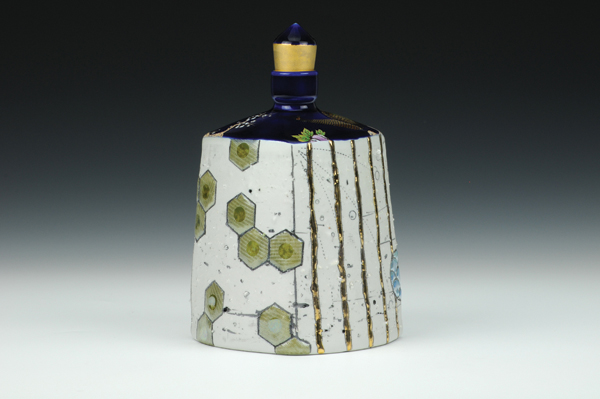 Contrasting Aesthetics and TexturesAfter much experimentation, I was able to throw porcelain with feldspar and molochite inclusions and alter the forms with the addition of plain porcelain parts. Throwing with inclusions in the clay is
Contrasting Aesthetics and TexturesAfter much experimentation, I was able to throw porcelain with feldspar and molochite inclusions and alter the forms with the addition of plain porcelain parts. Throwing with inclusions in the clay is -
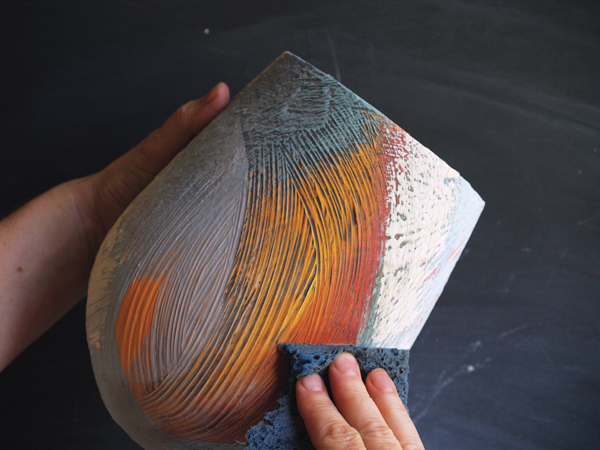 The Layered SurfaceSeeking a clay body with properties to best communicate my new ideas, I found myself testing every kind of clay from my local supplier. Before long, I had a studio full of reclaim. As a result, I bega
The Layered SurfaceSeeking a clay body with properties to best communicate my new ideas, I found myself testing every kind of clay from my local supplier. Before long, I had a studio full of reclaim. As a result, I bega -
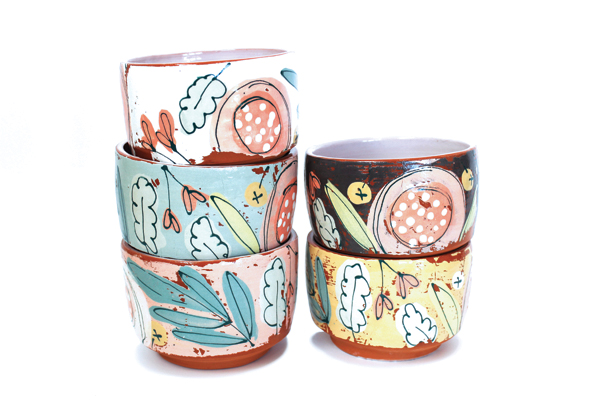 Drawn and TransferredThere is a rich history of sharing cultural values and beliefs both through the telling of stories as well as the use of hand-crafted objects. My illustrations are often graphic, simplified depictions
Drawn and TransferredThere is a rich history of sharing cultural values and beliefs both through the telling of stories as well as the use of hand-crafted objects. My illustrations are often graphic, simplified depictions -
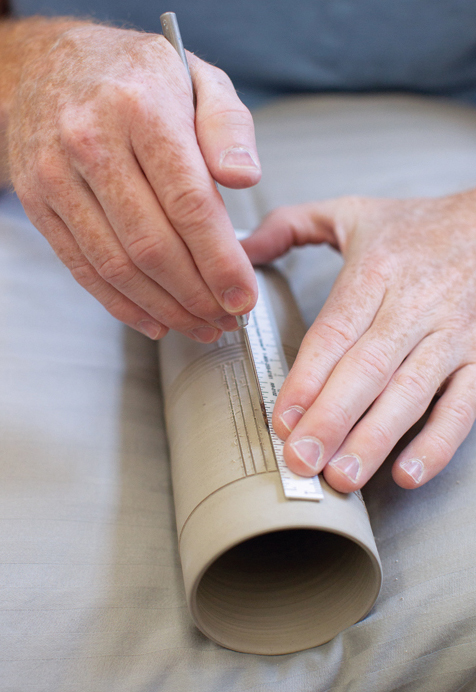 Incised and Inlaid TumblersI’m interested in creating surfaces that are rich in pattern, but also subtly beautiful in their simplicity. I work with a limited color palette, choosing to emphasize form through carving. This juxta
Incised and Inlaid TumblersI’m interested in creating surfaces that are rich in pattern, but also subtly beautiful in their simplicity. I work with a limited color palette, choosing to emphasize form through carving. This juxta -
 Luster 101As a ceramic artist who adds gold luster to every piece I fire, the most common emails I receive from other potters contain questions about how to use gold luster. Generally, it seems like there’s a b
Luster 101As a ceramic artist who adds gold luster to every piece I fire, the most common emails I receive from other potters contain questions about how to use gold luster. Generally, it seems like there’s a b -
 In the Studio: African Violet PotPlanters are a staple of the potter’s repertoire, but it’s hard to make a planter that works better than the standard red earthenware flower pot! However, certain plants benefit from special pots made
In the Studio: African Violet PotPlanters are a staple of the potter’s repertoire, but it’s hard to make a planter that works better than the standard red earthenware flower pot! However, certain plants benefit from special pots made -
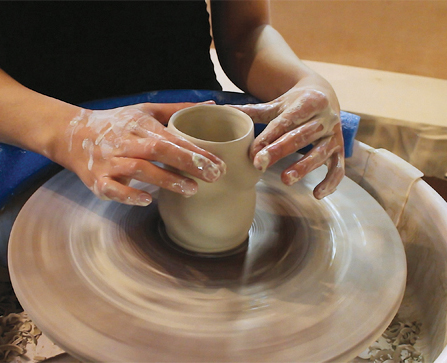 In the Studio: Personalized CupsWhen we think of pottery, we often think of working on the potter’s wheel—creating pots in the round. However, shaping a great pot doesn’t have to stop when the wheel does! There are endless opportuni
In the Studio: Personalized CupsWhen we think of pottery, we often think of working on the potter’s wheel—creating pots in the round. However, shaping a great pot doesn’t have to stop when the wheel does! There are endless opportuni -
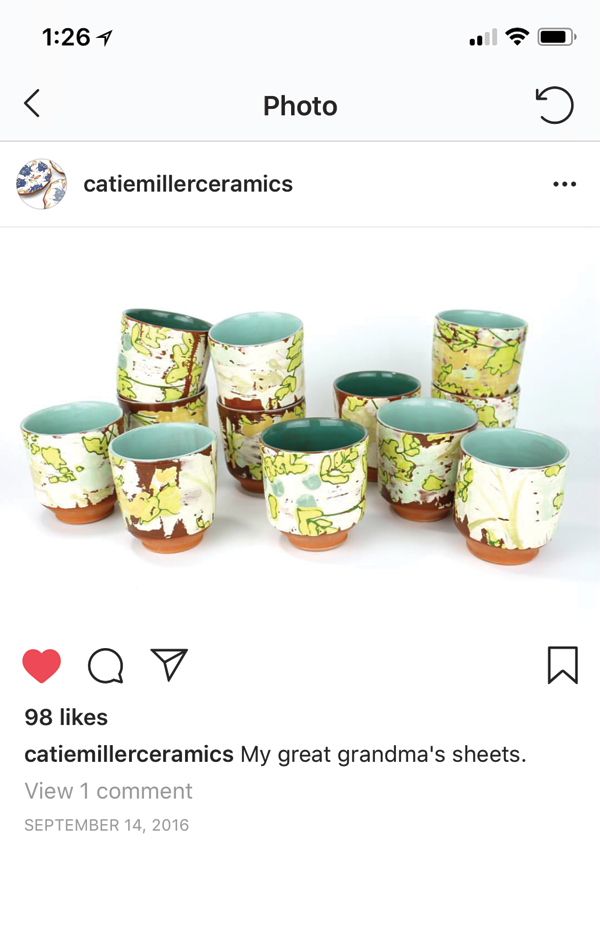 Editor's Note: Rabbit HoleThe modern idea of the rabbit hole no longer has a bound for Wonderland, but rather we’re in a long free fall with no clear destination—but we do know when we have arrived.
Editor's Note: Rabbit HoleThe modern idea of the rabbit hole no longer has a bound for Wonderland, but rather we’re in a long free fall with no clear destination—but we do know when we have arrived. -
John Britt Glazing Resources
-
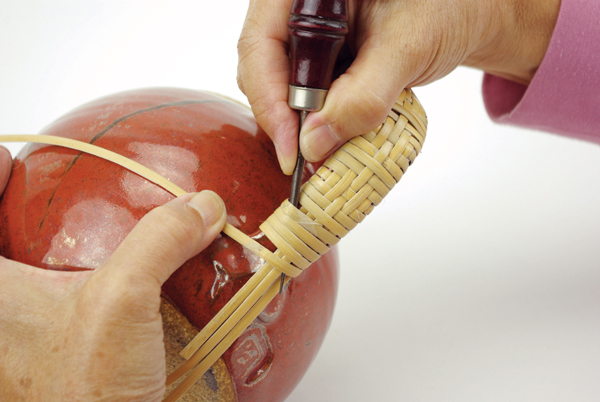 Natural Fiber Teapot EmbellishmentsA good teapot calls for creativity, meticulous craftsmanship, and hard work. While one of the most challenging forms to make, teapots often provide the maker with an opportunity to demonstrate persona
Natural Fiber Teapot EmbellishmentsA good teapot calls for creativity, meticulous craftsmanship, and hard work. While one of the most challenging forms to make, teapots often provide the maker with an opportunity to demonstrate persona -
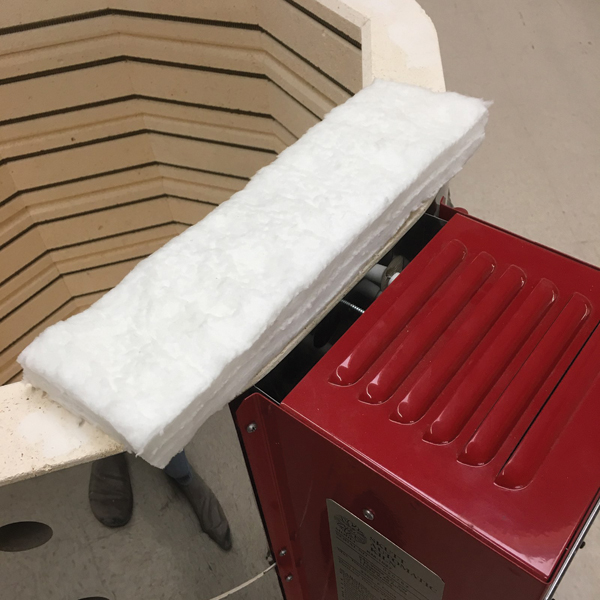 An Oxidized Bisque FiringMany clay and glaze faults in ceramic wares are caused by incomplete burnout (oxidation) of carbon and sulfur during the bisque firing. These faults are observed after a glaze firing, but the problems
An Oxidized Bisque FiringMany clay and glaze faults in ceramic wares are caused by incomplete burnout (oxidation) of carbon and sulfur during the bisque firing. These faults are observed after a glaze firing, but the problems -
 Using Wood Ash in GlazesWood ash or, more correctly, ash from organic vegetation, has been used as an ingredient for the development of glazes for at least 2000 years. Glazes utilizing wood ash are firmly rooted in Asian cer
Using Wood Ash in GlazesWood ash or, more correctly, ash from organic vegetation, has been used as an ingredient for the development of glazes for at least 2000 years. Glazes utilizing wood ash are firmly rooted in Asian cer -
 A Bowl of SoupIn my ceramic work, I pay close attention to the relationships between forms. A functional ceramic piece is rarely alone. It’s always surrounded by other forms and these should have a harmony based on
A Bowl of SoupIn my ceramic work, I pay close attention to the relationships between forms. A functional ceramic piece is rarely alone. It’s always surrounded by other forms and these should have a harmony based on -
 Minding the CornersIt’s all about the clay: how it feels in your hands, on your fingertips; how it can be shaped and decorated into useful, beautiful objects. Timing is crucial when working with clay. The many stages of
Minding the CornersIt’s all about the clay: how it feels in your hands, on your fingertips; how it can be shaped and decorated into useful, beautiful objects. Timing is crucial when working with clay. The many stages of -
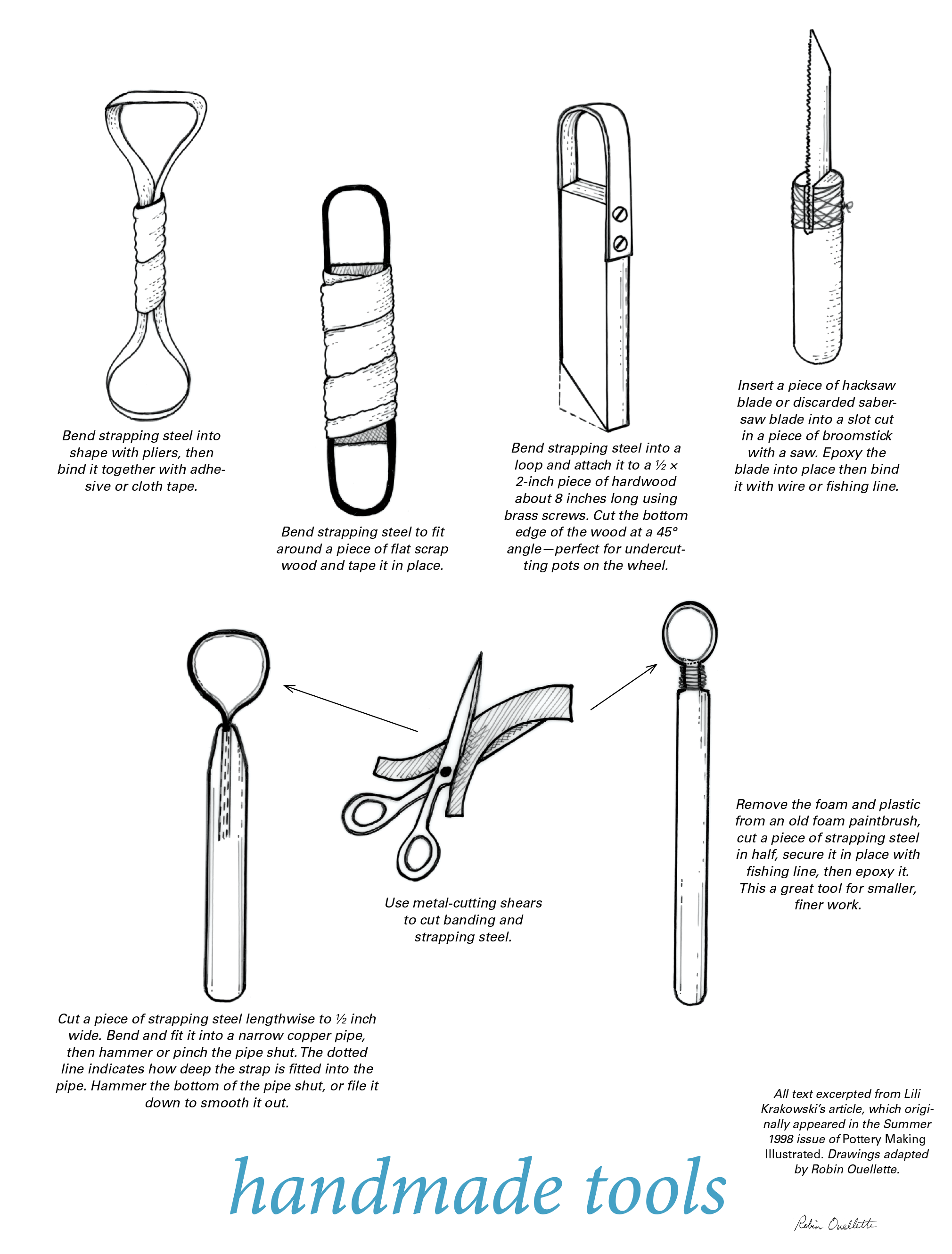 Pottery Illustrated: Handmade ToolsMaking handmade tools with Pottery Illustrated.
Pottery Illustrated: Handmade ToolsMaking handmade tools with Pottery Illustrated. -
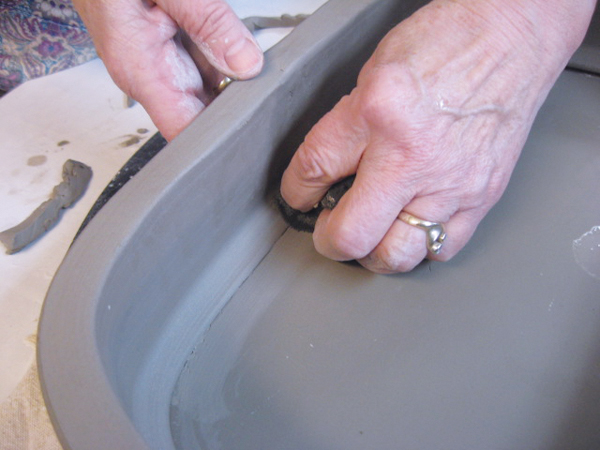 The Extruded (Baking) DishOne of my favorite things about the design of this extruder die is the beautifully thick top edge as well as the inside edge at the bottom (see 1). This beveled-edge design makes it unnecessary to add
The Extruded (Baking) DishOne of my favorite things about the design of this extruder die is the beautifully thick top edge as well as the inside edge at the bottom (see 1). This beveled-edge design makes it unnecessary to add -
 In the Studio: One Per DayAs an artist, there is always that hunt for the next project, challenge, discovery, or grand idea. In 2016, I found myself searching. Having completed a solo exhibit and a large piece for an exhibitio
In the Studio: One Per DayAs an artist, there is always that hunt for the next project, challenge, discovery, or grand idea. In 2016, I found myself searching. Having completed a solo exhibit and a large piece for an exhibitio
- «
- 21
- 22
- 23
- 24
- 25
- 26
- 27
- 28 (current)
- 29
- 30
- »
